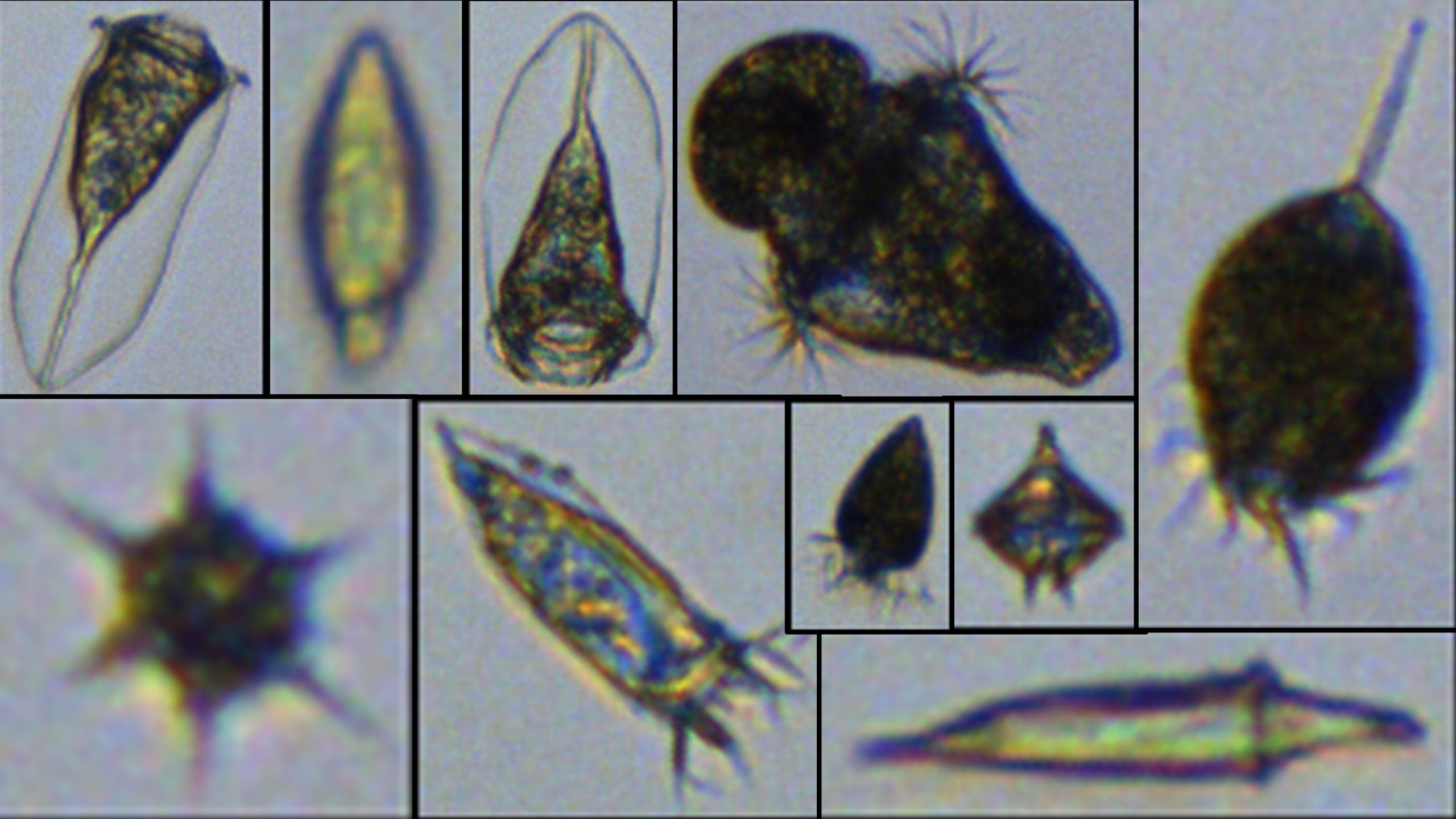With the cruise coming to an end, and with everyone busy wrapping things up, it’s easy to miss a tiny rack of tubes nested in the corner a cold incubator. The tubes contain live samples of microscopic plankton collected from some of the sites we have visited. The difference – the collections in these tubes were not focused on the diatoms that our group have been primarily focused on – instead, they contain samples of microscopic predators – or as we refer to them – heterotrophic protists.
Phytoplankton in the oceans suck up more than half of the global carbon dioxide, and are responsible for more than half of the world’s oxygen production. The carbon taken up by phytoplankton is converted into organic molecules, and is either incorporated into the cells of these organisms, or is excreted out – making these organisms analogous to terrestrial plants. And just like plants are grazed upon by herbivores, phytoplankton are grazed upon by a number of marine herbivores. Among these, tiny microscopic herbivores like the ones pictured above – are some of the major predators of phytoplankton. These organisms thus influence the fate of organic matter, including its transition or export to the depths of the ocean, as well as its transition to larger components of the food web (like krill, small crustaceans, and fish, etc.) that feed upon these organisms. In spite of their ecological significance, we know little about grazers in polar marine environments, and how they would respond to changes – such as those caused by climate change. The sheer diversity in these populations, and delicate nature of these organisms makes them difficult to grow and handle in laboratory settings, and experiments are therefore few and far between. The sampling opportunities on this cruise have provided us with an opportunity to set aside a small subset of the material for “rearing” these fascinating organisms back in our labs. If these delicate “samples” do survive the transit back to the lab (knock on wood), they will be grown in controlled laboratory conditions. The information generated from such studies in critical to understanding how polar environments would function in an increasingly changing world.
Image: A few images of protists- most are predators- obtained on this cruise using a “Flowcam,” a combination of a microscope and a high-speed microscope that captures images of particles as they flow through a small tube. Post contributed by Nigel D’souza.

